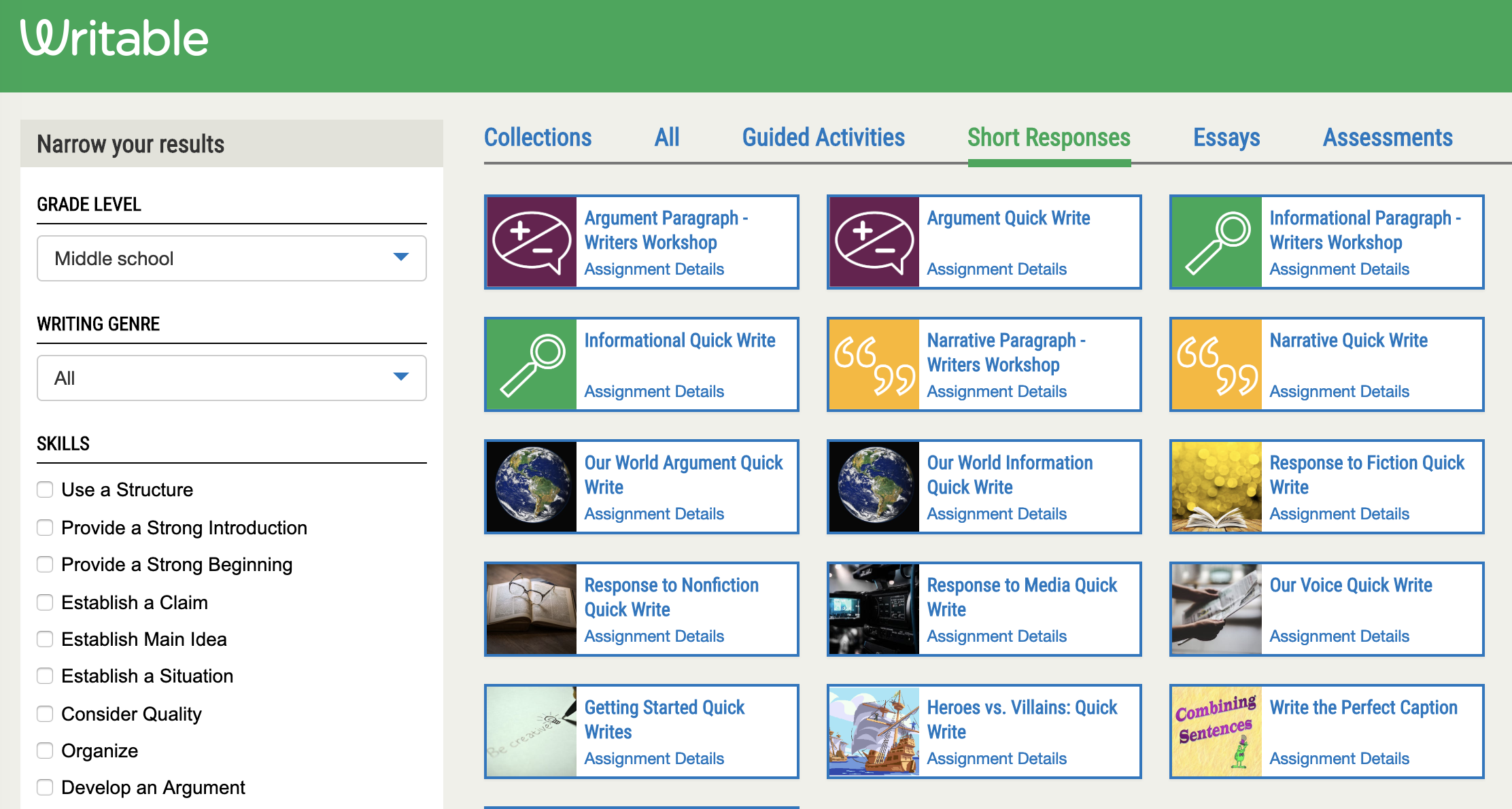When it comes to testing, many teachers rightfully have strong opinions. Some of these include:
- There’s too much of it
- The preparation takes up too much class time
- The tests dictate instruction
- Tests are based content or standards teachers don’t agree with
These concerns are real and valid, especially within particular locations or teaching contexts. The reality, though, is that testing is a large part of the public education system, and it is not likely to go away or radically change any time soon.
Students are required to take standardized, timed tests throughout their entire educational careers. And these tests continually ask students to compose writing samples and essays within a set time limit. Both the SAT and the ACT, for example, feature full-length essays. As you’re aware I’m sure, these tests are still often the basis by which colleges and universities decide whether or not to accept a student.
I know administrators may ask you to do on-demand writing as part of test prep for state summatives. Your district may mandate specific, timed “benchmark” assessments featuring on-demand essays. Either way, teachers can use these mandated tasks to further students’ writing progress for the better.
Instead of lamenting about what we wish wasn’t so, we can turn on-demand writing into a chance for growth. If you’re struggling to figure out how I’ve found some good methods and tools (like Writable) to incorporate – check them out below.
Teach students to break down a prompt
In Teaching Adolescent Writers, Kelly Gallagher advocates from the “ABCD” approach to helping students succeed at timed writing:

Re-written outside of the acronym, these steps are:
- Rewrite the prompt in your own, simpler language
- Create a basic outline for your answer
- Determine the structure and organization of your essay (and write it)
- Re-read your response to make any necessary corrections
There is no need to practice this with many prompts at once. Kelly advocates for reviewing the process before on-demand writing practice throughout the year. By using a gradual release model, he begins with teacher modeling, then guided practice, and finally independent practice. His approach happens throughout a unit or school year.
Use on-demand writing as a reading quiz
This is a topic that I’ve changed my mind about. I used to be against reading quizzes, which I viewed as “gotcha” style assessments. But this was before I heard Todd Finley mention the benefits of frequent low-stakes quizzes. Recalling information actually helps students to solidify their understanding of the information, and I’ve been able to see this now in my own classroom.
Consider a commonly-taught text like George Orwell’s Animal Farm. Below, you can see examples of on-demand prompts scaffolded to several levels:
Outline the gradual ways that the pigs have separated themselves from the other animals and seized power.
Identify the significant syntax and diction in Old Major’s speech. Explain how these individual choices make the speech effective.
Analyze the ways in which Animal Farm serves as an allegory based on the Russian Revolution.
These scaffolded prompts could be used with different students at different levels, or at different points throughout the study of the novel. You might even choose to “stack” several prompts like this together for a more developed response.
Encourage students to write faster
The main idea here is simple: teach students how to work within time limits. I realize there is taboo around encouraging students to work fast, and this is especially true when discussing students with IEPs who receive extra time accommodations. I’m of course not encouraging you to ignore students’ accommodations (this would be both immoral and illegal). However, you can teach all students useful strategies for maintaining momentum in their writing. This ultimately will help them to complete tasks faster, which is an essential test-taking skill. The on-demand writing prompt is the perfect place to practice this.
How can we encourage students to maintain momentum and write faster?
- Use “quick writes” that ask students to write as much as possible within a set time (one minute, for example).
- Ask students to maintain the physical act of writing, even if their ideas run out.
What does this look like? Ask students to keep moving the pen or keys. What they write doesn’t matter (right now). Ask them to repeat the last line they wrote. Give them a silly phrase like “I have nothing to write” and have them repeat it. The idea is to encourage the building and maintenance of writing momentum.
Writable is a great tool for this type of practice, since they have hundreds of pre-built assignments and prompts you can choose from (or customize), and students don’t feel as much testing pressure when writing inside an app.
Make on-demand writing part of a process
When teachers plan an editing or revising lesson, students will forget their essays. As you know, this is simply a law of the teacher universe.
On-demand writing is as a solution to this challenge. The task requires all students to complete a draft within a set time, so teachers can have students complete the on-demand writing task and then use it in a few different ways:
- Decide to grade the initial draft, then eventually “throw out” that grade
- Not grade the initial draft and just move into the other stages of the writing process
- Have students write a few pieces in the same genre and revise one of them (the on-demand piece being one of the pieces)
There are other options for infusing an on-demand writing piece into the writing process, and these are three that I’ve tried with much success.
It’s about a shift in mindset
Sometimes teachers have to put their foot down and speak out about their passions – to better education for their students, and for themselves.. And for some teachers, reducing or eliminating testing is a valid and important passion. However, for me, testing is such a part of the educational landscape, that it’s not the battle I want to fight – I would rather learn to compromise.
This ultimately points to a larger issue for teachers: here is much outside of our control within the educational system. And sometimes this does impede our ability to teach students at our best. However, I believe that with the right mindset, we can re-frame some of these frustrating issues into opportunities for both student and teacher learning.
Are you new to Writable and curious to learn more? Create a free account, request a quote, or schedule a quick demo.




